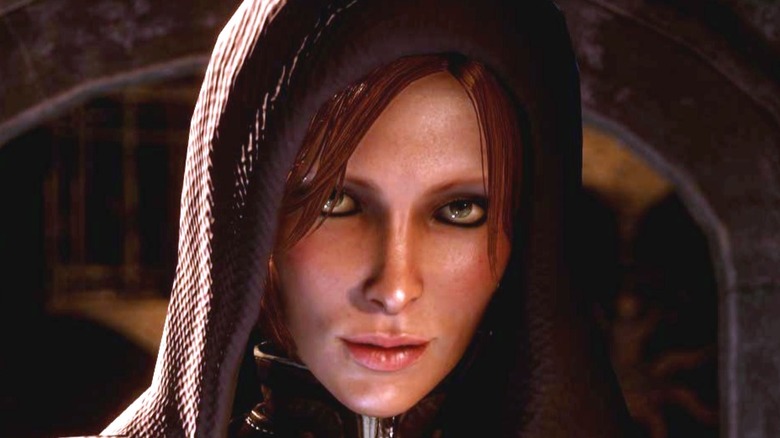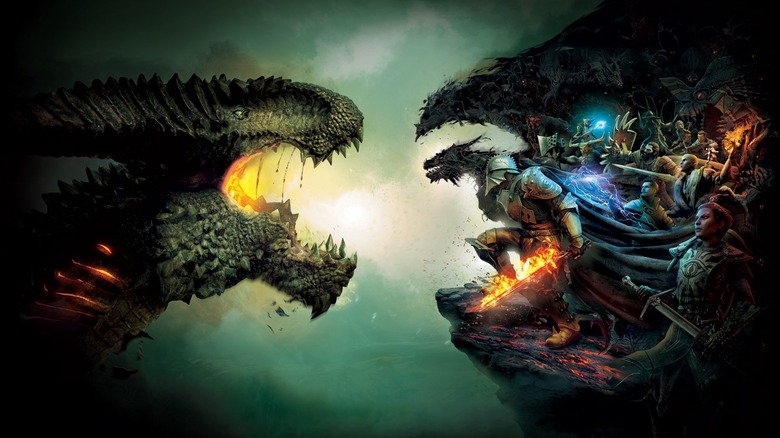Dragon Age Was Almost Very Different
Over the course of three entries and accompanying DLC, the "Dragon Age" series has earned a reputation for its detailed and dangerous world, rich mythology and lore, and compelling cast of characters. "Dragon Age: Origins" got players attached to their very own Hero of Ferelden before moving to a different location and protagonist in the less well received "Dragon Age 2." Thankfully, the team at BioWare rallied, carefully incorporating fan feedback into the next installment, "Dragon Age: Inquisition." This drive and attention to detail paid off, earning the project the highly coveted Game of the Year win at the 2014 Game Awards, among numerous other honors (via IMDb).
Given its in-depth setting, place of prestige in the gaming industry, and the number of devotees eagerly awaiting "Inquisition" sequel "Dragon Age 4," it may surprise you to learn that the franchise almost launched without a rather crucial element. What was the missing piece? Well, you don't need to look any further than the name of the series and the process the developers used to choose it — a move that would have lasting consequences and help shape the titles into the fantasy powerhouses they are today.
The case of Dragon Age's missing dragons
According to an interview with TheGamer, the first "Dragon Age" spent over a year in development before BioWare decided to add any on-screen dragons to the story. "Early on, 'Dragon Age' didn't have a name," shared environmental artist Ian Stubbington. "There were some ideas but nothing concrete, so it was decided that one of the coders would make a quick random name generator ... It was fired up and produced some names and the one that got the final vote by the team at the time was of course 'Dragon Age.'"
After settling on the moniker, the developers faced a new challenge: the concept they had cobbled together centered on a setting that had progressed past its era of high fantasy. "Magic was on the decline and dragons had been hunted to extinction," explained lead writer David Gaider, who later complained to senior creative director James Ohlen about the discrepancy. "Why would you call it 'Dragon Age' when the actual age of dragons was centuries previous? You didn't even see or fight a dragon!"
Ohlen advised Gaider to alter the narrative and world to fit the new title. This led to the return of dragons in "Origins" and the addition of an in-game calendar in which time periods are divided into "named 'ages.'" The shift also severely altered the entry's big bad, the Archdemon. According to managing editor Daniel Erickson, the creature originally resembled a "big, freaky, anime-villain sort of thing that felt like Lovecraft does 'Final Fantasy.'" The Archdemon transitioned from "anime-villain" to massive dragon towards the end of the production cycle, a choice that rippled across the successive entries and led to the presence of ten dragons in "Inquisition" years later.


